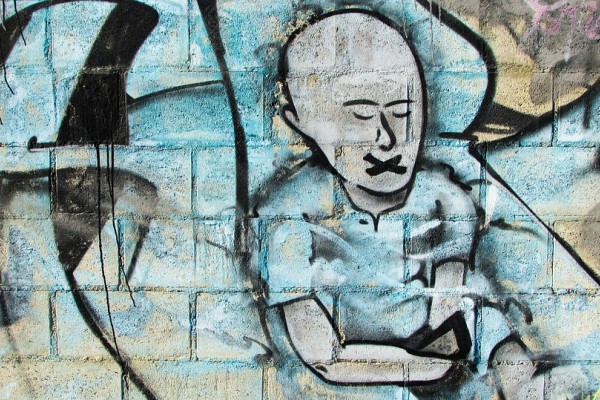Reviving the Radical Critique of Religion
When we think of the alliance of church and state, we tend to think of Constantine and Christianity, Holy Russia and the Prussian Empire. In more recent times, we may think of the theocracies of Saudi Arabia and Israel, or George Bush’s de facto fundamentalist regime. Few of us think about Canada.
Going Their Separate Ways?
Here, we think, there is successful resistance to such alliances. In Canada there is a limit to which the Vatican can pressure Catholic politicians to oppose gay marriage, or the Protestant sects persuade the populace to support religious law in Ontario. In Canadian courts, oaths can be merely affirmations – without bibles. In our universities, or so we believe, administrators insist upon the secular nature of their institutions.
In this climate of opinion, then, what are we to make of the archaic and parochial practices of York University?
York University is the only university in Canada that officially forbids the scheduling of classes on the Jewish high holy days of Rosh Hashana and Yom Kippur. No other religious holidays are accorded any such recognition at York. True, no classes are held on the Christian holiday of Good Friday, but that is because it is a statutory holiday, not merely a university observance.
The current practice, which dates from 1996, violates the York University Act of 1965, whose Article 15 – reflecting the Canadian secular spirit of separation of church and state – expressly forbids the imposition upon any member of university community of “any religious observances according to the regulations of any particular denomination or sect.”
A Long Paper Trail
In the fall of 2004, I started challenging this practice on the grounds that it is illegal and discriminatory, and wrote to York president Lorna Marsden requesting that she bring the university practice into compliance with the statute. She refused, and referred me to the university Senate, allegedly because the scheduling of classes is an academic matter under the purview of that body. I then wrote to the Senate repeating my request. A year later, a Senate committee reported but managed to sidestep the issue entirely, merely providing a tedious account of classroom hours. After this, I wrote an appeal to the provincial Ministry of Training, Colleges and Universities, which did not even reply, let alone intervene. A subsequent letter from the university’s general counsel, which, while attempting to defend the practice, inadvertently clarified that it was not the Senate but the Administration, in the person of Vice-President Academic Michael Stevenson (now president of Simon Fraser University), that had originally established the practice.
By this time, I had decided to move beyond letter writing to what I call “an act of civil obedience.” In an open letter to the president, published in the campus newspaper, I announced that I would be defying the illegal practice of the Administration and adhering to the letter of the statute by holding classes on the Jewish high holy days. My effort gained overwhelming support in the press and the broadcast media. Almost immediately, however, I began to receive menacing anonymous phone calls at home and work. In addition, one of my students indicated that he had filed a human-rights complaint against me, with the help and financial support of B’nai Brith. On Rosh Hashanah eve, I received a message from my faculty union, directly or indirectly on behalf of the Administration, threatening “serious consequences” if I held classes without offering alternative sessions for those that did not attend.
At that point I decided to switch gears. Instead of holding classes on the Jewish holidays, I decided to cancel classes on all religious holidays, beginning with the Muslim holiday of Eid-ul-Fadr. I calculated that this would compel York to drop religious observances altogether.
When I announced this change of strategy to the press, I was deluged with requests for interviews, all resoundingly supportive. The York Administration counterattacked by spinning out a fabrication: an apocryphal story about the practice having originated with a student request back in
1974 – as if student requests count for anything in the university! They made the further false claim that the practice was a Senate policy, and stated that the practice was in response to the large proportion of the student population who were Jews. York’s media-relations office then floated the figure of 10 per cent, but when Carolyn Parrish’s office inquired about the percentage of Muslim students, the university insisted that it kept no statistics on the religious affiliation of York students! In the wake of the campaign, the Administration steadfastly refused to change its practice. Then the York Federation of Students called upon it to extend the courtesy to Muslim holidays, in the name of equity.
Having exhausted internal remedies, I have now taken the matter before the Ontario Human Rights Commission, on the grounds of religious discrimination.
Follow the Money
Whatever the outcome of this strange saga, its larger meaning has become increasingly apparent: York University, a public institution that is an extension of the state, has a de facto religion. Its practice of privileging one particular religion is a clear indication of this. What is also apparent, to me at least, is that this heretofore unacknowledged alliance between a public institution and a particular religious group rests upon that most hallowed of academic traditions: fundraising. For, as the controversy over religious holidays rages on, attention has inevitably turned to York’s major sources of private donations and, in particular, to the workings of the York University Foundation, the extra-statutory money machine of the University.
Modern social criticism began as an attack on religion as a prop of the state – in the work of the philosophy of the Enlightenment, the young
Hegelians, Bakunin, Marx and Engels. With the separation of church and state – which was made in the interest of freedom of religion and for the flourishing of all faiths – religion moved into the shadows of social analysis. No longer visible and hence vulnerable to attack, religion was, in effect, privatized. It became a strictly personal matter. In the wake of this critique, the criticism of religion was viewed as an affront or offense to one’s fellow citizen, an infringement upon their individual freedom, rather than a challenge to the power of the state. Ironically, this consequent, all-embracing spirit of tolerance subsequently enabled an explosion of religious faith in its most intolerant and fanatical forms.
The Left long ago abandoned the revolutionary critique of religion. Today, immersed in identity and coalition politics and an indiscriminate enchantment with diversity and difference, the Left has no solid base from which to counter the real demons of the day. The de facto re-establishment of religion at York and elsewhere, however, puts in relief the pervasive and persistent influence of religion in our society. This unforeseen phenomenon offers an opportunity to revitalize the radical critique of religion.
The challenge is two-fold and paradoxical: we need to insist upon the divorce of the state from religion, and we need at the same time to keep faith visible (and thus vulnerable) to a renewed critique of its alleged supernatural authority.
This article appeared in the January/February 2006 issue of Canadian Dimension (Politics and Religion).










